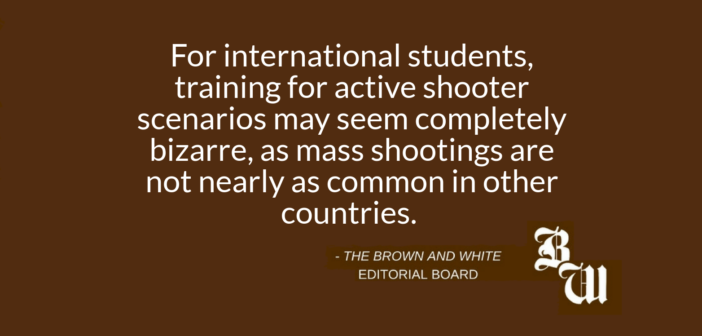In the world of politics, a year should be enough time to pass legislation that accomplishes specific goals or agendas. As of Monday, it has taken over a year, and still counting, to pass legislation on one particular item.
Las Vegas, Oct. 1, 2017.
A shooter killed 58 people and wounded hundreds, in what was our country’s worst mass shooting. He used bump stocks on 12 of his weapons, which can increase the firing rate of a semi-automatic rifle.
In the days following the shooting, politicians called for a ban on bump stocks. It took until earlier this week, however, for President Trump to announce that his administration was only a few weeks away from banning bump stocks.
Since the tragedy in Las Vegas, the country has been rocked by mass shootings across the country — from California to Tennessee, Texas, Pennsylvania, Florida and Maryland. It seems to be part of our lives now, as we are accustomed to reading about the next one in the news.
If action won’t be taken in time to prevent the next inevitable shooting — whether that action is stricter gun laws or greater acknowledgment and attention toward mental health — the best we can do as youths is to prepare and inform ourselves on these incidents.
Last week, International Voices, a Lehigh student magazine, and the Lehigh University Police Department hosted an active shooter protocol workshop.
For international students, training for active shooter scenarios may seem completely bizarre, as mass shootings are not nearly as common in other countries. But it has become a new normal here. According to CNN, the United States makes up less than 5 percent of the total global population but holds 31 percent of global mass shooters. From 1966 to 2012, there have been 90 mass shootings in the U.S., 72 more than the next highest country, the Philippines.
The difference between the U.S. and other countries when it comes to gun culture and the climate surrounding mass shootings, is that we must prioritize drills and training. It’s not a choice. In classrooms across the country, students are receiving active shooter training, but they are not always taking it as seriously as they should.
In order to combat the lackadaisical attitude of some students, school administrators might need to make training mandatory. Some students might think it could never happen to them, however, it is in their best interest to receive training and take the necessary precautions to prepare for such life-threatening scenarios.
Students sometimes treat these scenarios as a joke. Threats have been posted online and phoned in to college and high school campuses, and are often seen as an opportunity to get out of class. In some extreme cases, students call in fake threats to force the cancellation of class.
We should have enough respect and common sense to takes these situations seriously and prepare as best we can. Students should feel prepared and trained in the event there is an active shooter situation, and in order to achieve that, they need to look at training as crucial to their well being.
With midterm elections only a few weeks away, activists have been vocal about the importance of voter registration, urging people to become interested in new legislation and seat-changing among politicians.
And while change is still yet to happen, there is pressure building. After Parkland, a youth movement spread across the country, aimed at motivating people to become more active when elections occur and vote out those who don’t support gun control.
Who can say, however, whether or not this momentum will lead to anything, or just stagnate and lose its appeal to young voters.






Comment policy
Comments posted to The Brown and White website are reviewed by a moderator before being approved. Incendiary speech or harassing language, including comments targeted at individuals, may be deemed unacceptable and not published. Spam and other soliciting will also be declined.
The Brown and White also reserves the right to not publish entirely anonymous comments.
3 Comments
15–20 years ago, following a mass shooting in Australia, they enacted sensible gun-control measures like background checks for all purchases and a ban on assault weapons. It took 12 days — that’s what happens when legislators work for the people.
Thank you for your example.
Yes, we in America are lucky that our second amendment rights protect us so we do not end up like Australia – that is a good example of what happens when citizens do not have a Bill of Rights to protect it from the government.
Australia should demand a basic bill of rights for its citizens!
Guns, pistols or rifles not artillery, don’t kill people, people do. Weapons are a tool or entertainment whose use is controlled by human fingers on the trigger. Apart from criminals and suicide victims, guns were not usually a civic problem in the last century.
Our current society seems to produce people who desire using guns to kill other people. Another Brown and White article mentions an increase in the need for mental health services, some of which probably involve violent thoughts. Should we not consider screening for violent tendencies for those handling guns or with access to them. Start with police and linebackers?